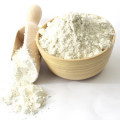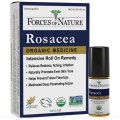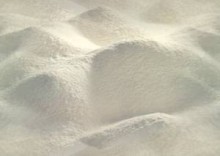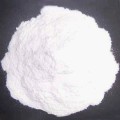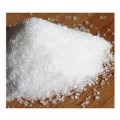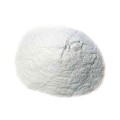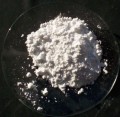 Loading... Please wait...
Loading... Please wait...- Home
- About Us
- Shipping, Returns & FAQ's
- Contact Us
-
For Your Information
- Canadian Customers Have a Choice if Shipping Via UPS
- Aura Cacia Homemade Aromatherapy Recipes
- Bella Nella Altered Art & Paper Crafts Blog
- Forms of Herbal Preparations
- Laundry Tips To Conserve Energy Blog from The Laundress
- The Story of Frontier Natural Products Co-Op
- Sovereign Silver Hydrosol and Aloe Protocol Stops Downward Spiral of Gut Dysbiosis
- Disclaimers
- Recommended Links
- RSS/Recent News
- The Story of Typhoon Housewares
- Reviews/Testimonials
- Raw Ingredients for Mfg
- Home
- Grocery
- Food Mixes
- Xanthan Gum Food-Grade 80-Mesh Powder Bulk
- Home
- Raw Materials
- Emulsifiers
- Xanthan Gum Food-Grade 80-Mesh Powder Bulk
- Home
- Raw Materials
- Thickeners
- Xanthan Gum Food-Grade 80-Mesh Powder Bulk
- Home
- Raw Materials
- Stabilizers
- Xanthan Gum Food-Grade 80-Mesh Powder Bulk
Xanthan Gum Food-Grade 80-Mesh Powder Bulk
Product Description
![]() Xanthan gum is used in dairy products and salad dressings as a thickening agent and stabilizer. Xanthan gum prevents ice crystals from forming in ice creams, and also provides a 'fat feel' in low or no-fat dairy products.
Xanthan gum is used in dairy products and salad dressings as a thickening agent and stabilizer. Xanthan gum prevents ice crystals from forming in ice creams, and also provides a 'fat feel' in low or no-fat dairy products. ![]() Xanthan gum is a food additive used to thicken, emulsify, and stabilize water-based foods. It is used in many different types of food, including salad dressings, sauces, condiments, ice creams, and other frozen foods.
Xanthan gum is a food additive used to thicken, emulsify, and stabilize water-based foods. It is used in many different types of food, including salad dressings, sauces, condiments, ice creams, and other frozen foods. ![]() Gluten-Free
Gluten-Free
Xanthan gum derives its name from the strain of bacteria used during the fermentation process, Xanthomonas campestris. Xanthan gum is a polysaccharide used as a food additive and rheology modifier, commonly used as a food thickening agent (in salad dressings, for example) and a stabilizer (in cosmetic products, for example, to prevent ingredients from separating).
One of the most remarkable properties of xanthan gum is its ability to produce a large increase in the viscosity of a liquid by adding a very small quantity of gum, on the order of one percent. In most foods, it is used at 0.5%, and can be used in lower concentrations. The viscosity of xanthan gum solutions decreases with higher shear rates; this is called pseudoplasticity. This means that a product subjected to shear, whether from mixing, shaking or even chewing, will thin out, but once the shear forces are removed, the food will thicken back up. A practical use would be in salad dressing: the xanthan gum makes it thick enough at rest in the bottle to keep the mixture fairly homogeneous, but the shear forces generated by shaking and pouring thins it, so it can be easily poured. When it exits the bottle, the shear forces are removed and it thickens back up, so it clings to the salad. Unlike other gums, it is very stable under a wide range of temperatures and pH.
In foods, xanthan gum is most often found in salad dressings and sauces. It helps to prevent oil separation by stabilizing the emulsion, although it is not an emulsifier. Xanthan gum also helps suspend solid particles, such as spices. Also used in frozen foods and beverages, xanthan gum helps create the pleasant texture in many ice creams, along with guar gum and locust bean gum. Toothpaste often contains xanthan gum, where it serves as a binder to keep the product uniform. Xanthan gum (When sometimes not made from wheat - See below for GF allergy information)is also used in gluten-free baking. Since the gluten found in wheat must be omitted, xanthan gum is used to give the dough or batter a "stickiness" that would otherwise be achieved with the gluten. Xanthan gum also helps thicken commercial egg substitutes made from egg whites, to replace the fat and emulsifiers found in yolks. It is also a preferred method of thickening liquids for those with swallowing disorders, since it does not change the color or flavor of foods or beverages.
One advantage of xanthan gum is that a little goes an incredibly long way. Cosmetic manufacturers add a very small amount of xanthan gum to their cream-based products in order to keep the individual ingredients from separating. Despite the use of bacteria during processing, xanthan gum itself is not generally harmful to human skin or digestive systems, though some individuals may find they are allergic to it. Xanthan gum is often used whenever a gel-like quality is sought.
Xanthan gum is also used as a substitute for wheat gluten in gluten-free breads, pastas and other flour-based food products. Use it along with non-gluten containing flours to make gluten-free baked goods that have good structure and texture. Add a pinch of Xanthan gum to your homemade salad dressings for improve suspension of vinegar and oil.
In cosmetics, xanthan gum is used to prepare water gels, usually in conjunction with bentonite clays. It is also used in oil-in-water emulsions to help stabilise the oil droplets against coalescence. It has some skin hydrating properties.
| Amount Per Serving | % Daily Value | |
| Calories | 30 | |
| Calories from Fat | 0 | |
| Total Fat | 0 g | 0% |
| Saturated Fat | 0 g | 0% |
| Trans Fat | 0 g | |
| Cholesterol | 0 mg | 0% |
| Sodium | 10 mg | 0% |
| Total Carbohydrate | 7 g | 2% |
| Dietary Fiber | 7 g | 29% |
| Sugars | 0 g | |
| Protein | 0 g | |
| Vitamin A | 0 | 0% |
| Vitamin C | 0 | 0% |
| Calcium | 0 | 0% |
| Iron | 0 | 0% |
aka: gomme xanthane, guma de xantana
Origin: USA
Notes: 80 mesh. CAS #11138-66-2. NF/FCC food grade. Halal Kosher Certified by FANCA. Non-irradiated. Sold and labeled as for further manufacturing. Individuals must exercise their independent judgment in determining its appropriateness for a particular purpose or use. As with any manufacturing process, we suggest a small, lab-scale manufacturing for evaluation purposes prior to full commercial manufacturing.
Specifications are subject to change without notice.
* FDA disclaimer
Source: wikipedia
Find Similar Products by Category
You Recently Viewed...
Currency Converter
Choose a currency below to display product prices in the selected currency.




